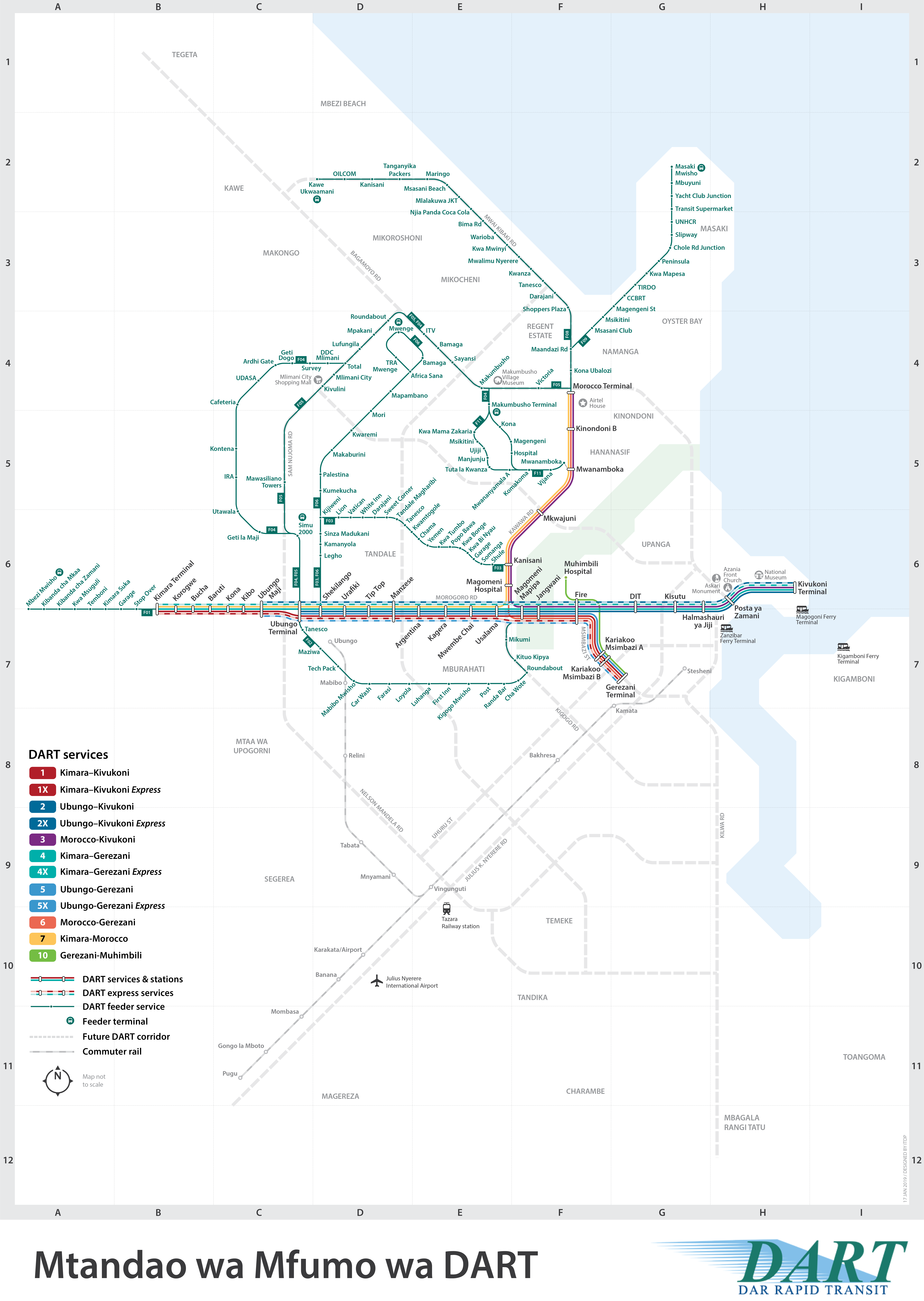Work on Dar Rapid Transit (DART), the Dar es Salaam BRT project, began in 2003 when ITDP found great enthusiasm for BRT in the city. ITDP secured the support of then-mayor Kleist Sykes, the support of local NGO head Asteria Mlambo and partnership with the World Bank, USAID, and UN Environment. Shortly thereafter, the city embarked on the development of East Africa’s first BRT system. ITDP oversaw the feasibility study as well as the business and administrative planning and has provided ongoing support throughout the planning stages of the project.
In 2013, the city started construction on the DART project, including adding centre-aligned BRT lanes and world-class stations on Morogoro Road, one of the city’s main thoroughfares. Through this project, over 1,000 construction jobs were created. Perhaps most exciting is the fully dedicated BRT-only street which runs through Dar es Salaam’s city center. As a result, the project has the potential to reverse the city’s congestion problems, which previously made it all but impossible to access the city’s downtown by car. The project also faced the challenge of establishing bus operating companies and attracting investors. ITDP brought its first-hand experience at transforming the minibus taxi industry into shareholders in BRT operating companies from other cities, including Johannesburg and Cape Town.
The project has breathed new life into Dar es Salaam and increased its economic competitiveness in the East Africa region. Government officials from across Africa are now travelling to Dar es Salaam to learn from the city’s success in implementing BRT. The DART BRT has dramatically reduced commute times for Dar es Salaam residents, who previously faced upwards of 4 hours stuck in traffic each day. The project also helped improve conditions for non-motorised transport in the city. Drawing on ITDP’s expertise in bicycle and pedestrian planning, the team implemented high-quality bicycle lanes parallel to the BRT corridor, as well as safe sidewalks and at-grade pedestrian crossings. This has provided a safe space for cyclists and pedestrians, helping to build a friendlier, more people-centric city.
With Phase 1 complete and Phase 2 construction on the way, this project has the potential to be truly transformative, improving urban life in Tanzania and curbing the potential for sprawl.
In 2017, ITDP in partnership with the DART agency worked to develop the Dar es Salaam BRT (DART or popularly known in Dar as Mwendo Kasi) map below. The map helps to improve wayfinding around the city, assisting visitors, new residents and even frequent riders with trip planning.

Dar es Salaam won the Sustainable Transport Award in 2018, and hosted ITDP’s MOBILIZE summit. More than 200 international transport and development experts came to see DART in action, and learn from the mobility and access successes the city has achieved. ITDP Africa continues to support next phases of DART, and provides support to the city for expanding access to cycling and walking.